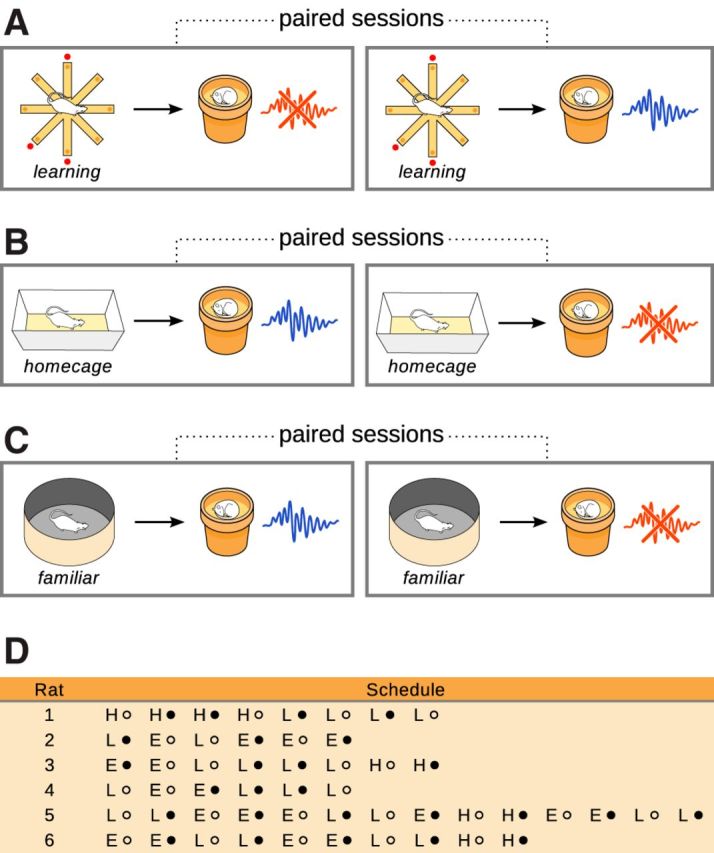Figure 1.

Experimental schedule. A–C, Behavioral conditions and stimulation protocols were alternated in a pseudorandom manner. For each behavioral condition (A, training on the maze; B, home cage; C, exploration of a familiar arena), stimulation protocols were paired for comparison (red crossed ripple icon, detection—stimulation; blue intact ripple icon, detection–delay–stimulation). D, Experimental schedule for all rats. Because conditions and protocols were intermingled in the same rat, training on the maze was limited and discontinuous, preventing assessment of progressive changes in task performance. (H, home cage; E, exploration of the familiar arena; L, learning the radial maze task; closed circle, immediate stimulation; open circle, delayed stimulation).
